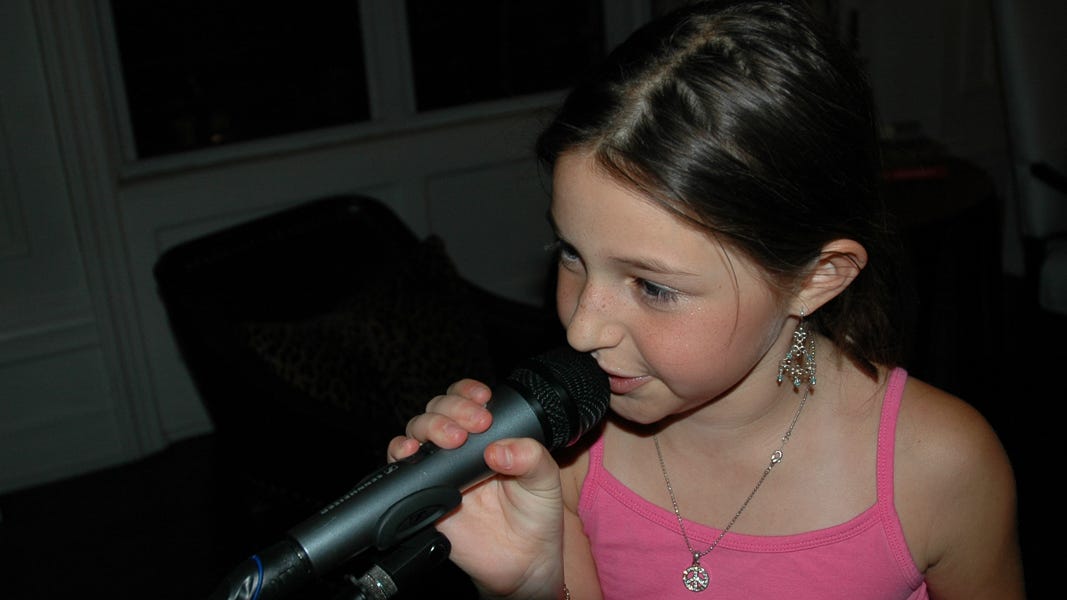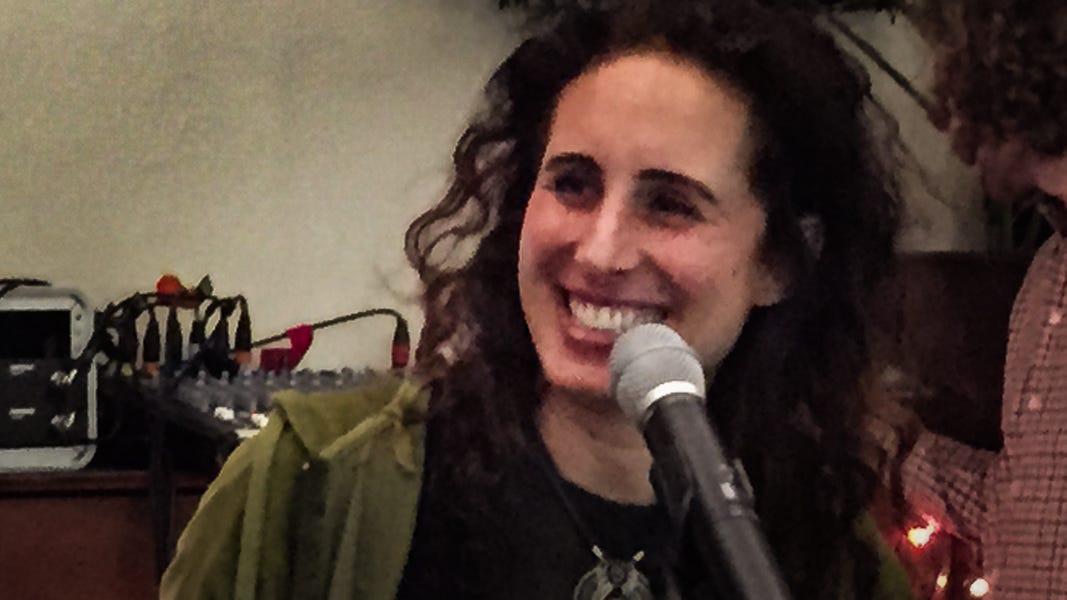I have always been a technophile, so when the pandemic happened and we transitioned to working and living in a ZOOM world, I naturally upgraded the quality of the equipment I depended on for many hours daily. After trying to get digital cameras to work, I settled on Logitech's excellent 4k Brio Webcam. As a former photographer, I knew lighting would be necessary, so I selected Elgato Key lights for pleasing, dependable illumination. I have jumped around for microphones from the AT 2020 USB to the Shure MV7 to now using a RodeCasterDuo mixer with the Shure and the Rode PodMic. Getting the quality of the visuals right was easy - what you see is what you get. Audio is a little different. I heard what I sounded like through various microphones only when I started appearing on podcasts. I’ve now learned that I can also listen to my audio feed using headphones. Still, my voice's internal sound distorts how I listen to myself on air. More importantly, it got me thinking about when it is tough to listen to ourselves, especially when we think we see ourselves.
Marshall frequently talks about leaders feeling like they have all the answers or subconsciously have to prove how smart they are. People in positions of leadership often control the microphone (physically and metaphorically) and too consistently fail to hear themselves the way others do. Sanyin Siang constantly reminds leaders that they don't need a microphone; their position amplifies their words in ways they are unaware of. When I speak on a ZOOM call, I cannot tell if the sound is loud or soft - only the person on the other end of the call can give me a sound check. When a leader speaks, the occasional sound check might be a good way to test and modulate the volume.
Our tone often says more than our words. And we may intend a certain tone, which may be received differently by those we lead. When I first heard a recording of my voice from my AT microphone it was a little bright and scratchy, making me sound anxious and rushed. When I switched to the Shure, the tone was warmer and richer. It felt like I was talking less, with more intention and confidence. Like my microphone, it is tough to hear how the receiver interprets our words. When we speak, we listen to what we intend to say, not what the listener hears. It is not only about the words; it is the cadence, the tone behind the words, the intonation and inflection, and even the emotions of the listener as they enter the conversation. Great leaders understand how to decode both sides of the dialogue, hear intently what is being said, and communicate so that others understand the message as intended.
If you cannot hear your own microphone, it is critical to have someone on the other side of the call give you honest feedback. There are many reasons to have trusted confidants, collaborators, and coaches; honest, objective feedback has to be at the top of the list. Hearing feedback clearly and without judgment is an art unto itself. Knowing how you are being listened to is the key to tuning the system to deliver the words the way you want them heard (my friend Connie Dieken is an expert at this). We know our meaning so well it is hard to imagine how others might interpret us. We think that, as leaders, we have the latitude to speak informally or casually - I am coming to the understanding that it is best to assume that is never the case. The more power and influence we have, the more we are always “on”. Some of the biggest blunders in recent memory have been when someone didn't know the microphone was on - an extreme case of not hearing your microphone!
When we become leaders, we also take on a role. We are entrusted with making decisions that influence lives, and we have the potential to create meaningful change and impact around us. With great power comes great responsibility. Knowing that we cannot hear our own microphones is a powerful reminder that we need to be sensitive in how we love and lead. This sensitivity starts with understanding our words' weight and their impact. Like fine-tuning a microphone for clarity and warmth, we must tune our communication to be clear, empathetic, and effective. Ultimately, the ability to listen—truly listen—to others and to ourselves is what distinguishes good leaders from great ones. It's not just about speaking; it's about ensuring our message resonates as we intend, creating an environment where everyone feels heard and valued.
With love, gratitude, and wonder,
Scott
From Red Alert to Re-engagement: A Leader's Guide to High-Performance Teams by Dean Miles - Executive Coach
High-performance teams are the engines of innovation and success in any organization. These teams operate at peak efficiency, driven by a relentless ambition and a collective commitment to excellence. However, even the most efficient engines can sputter. When a high-performance team shows signs of low engagement, it's not just a problem; it's an alarm bell. The first thing to recognize is the seriousness of the issue. Low engagement in a high-performance team isn't just a minor hiccup; it's a symptom of deeper issues that need immediate attention. In such scenarios, a sense of urgency is crucial. Complacency can lead to a downward spiral, affecting morale, productivity, and the overall success of the project or the organization.
While addressing low engagement is critical, preventing it is even more so. Regular check-ins, creating an open and inclusive culture, and recognizing and celebrating successes can go a long way in maintaining high levels of engagement. Managing low engagement in a high-performance team requires a swift and strategic response. It's about recognizing the issue, understanding its gravity, and implementing a targeted strategy to address it. The Five Cs framework provides a comprehensive approach to diagnosing and resolving engagement issues, ensuring that your high-performance team remains high-performing.
15 Provocative Questions for Creative Problem-Solving by Ruth Gotian, Ed.D., M.S.
Embracing curiosity is a personal journey and a pathway to expanding our comprehension of the world and nurturing mental well-being. It fosters a mindset that thrives on continuous learning, resilience, and a profound sense of fulfillment. Opening your mind to new knowledge allows you to forge connections others have yet to envision. In the journey from incessant childhood questioning to adulthood's diminishing curiosity, the true potential of innovation often remains untapped. These questions serve as catalysts, sparking curiosity and guiding individuals and teams toward innovative thinking and problem-solving, illustrating that the path to innovation begins with the simple act of asking why.
The Person Behind Me Who Is Actually Next To Me by Ayse (Eye-Shay) Birsel
Leah has this extraordinary talent to see ideas before me and help to birth them. This has different names—clairvoyant, precognition, oracle, seer, doula. Clairvoyant is the one I prefer. It is a portmanteau that combines clear + seeing. She sees things clearly, way ahead of me.
You need someone who sees things ahead of you.
She saw something in me and introduced me to her dad, Ralph Caplan, the legendary editor-in-chief of ID Magazine and author of the seminal book on design, By Design (read By Design: Why There Are No Locks on the Bathroom Doors in the Hotel Louis XIV and Other Object Lessons—it will have you laughing and learning simultaneously.) That introduction shaped my next 25 years. Ralph introduced me to Herman Miller, leading to beautiful friendships, collaborations, and office systems (Overlay being the most recent.) When the 2008 Great Recession happened, and Herman Miller and other clients took all design work in-house, she told me, “Why don't you use this time to think about how you think because you think differently.” She turned a huge challenge into an unexpectedly rich opportunity.
You need one person to believe in you.
John Waters says all you need is one person to believe in you (as long as that person is not your mom) to have self-confidence (read more in his hilarious, Mr. Know-It-All: The Tarnished Wisdom of a Filth Elder) For me, that person is Leah.













